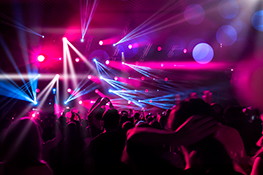Stage Lighting Design: The Art of Storytelling Through Light
The Unsung Hero of Theatrical Production
Stage lighting is often overlooked, yet it’s a crucial element in any successful theatrical production. More than just illuminating the stage, lighting design is a powerful storytelling tool, capable of shaping emotions, setting the mood, and guiding the audience’s eye. A skilled lighting designer uses light, shadow, and color to create a visual narrative that complements and enhances the performance, transforming a simple stage into a captivating world. This article explores the artistry and technical skills involved in creating compelling stage lighting designs.
Understanding the Fundamentals of Stage Lighting
Before delving into the creative aspects, it’s essential to grasp the technical fundamentals. This includes understanding various lighting instruments – from Fresnels and ellipsoidal reflectors to LED pars and moving heads – and their respective capabilities. Each fixture possesses unique properties, affecting beam shape, intensity, and color mixing. Mastering these tools is the first step in translating a director’s vision into a tangible lighting design. Furthermore, understanding color temperature (measured in Kelvin), color mixing techniques (additive and subtractive), and the effective use of gels and filters are critical for achieving specific atmospheric effects.
Beyond Illumination: Shaping Narrative Through Light
The true artistry of stage lighting lies in its ability to tell a story. A skilled designer uses light to:
Highlight Key Moments and Actions:
Using focused beams to draw attention to crucial moments or specific actors enhances the narrative’s impact. This technique can guide the audience’s focus, emphasizing emotional peaks or plot twists.
Create Atmosphere and Mood:
Light plays a pivotal role in setting the atmosphere. Warm, golden hues can evoke feelings of comfort and nostalgia, while cool blues and greens might suggest mystery or unease. Strategic use of shadow can further amplify the mood, creating tension or suspense.
Define Space and Time:
Lighting design can effortlessly shift the setting. A single change in lighting intensity and color can transition the scene from day to night, from an intimate room to a vast landscape. This manipulation of time and space contributes significantly to the overall storytelling.
Character Development Through Lighting:
Lighting choices can contribute substantially to character development. By using specific colors or lighting angles, the designer can highlight a character’s personality, emotional state, or even their hidden motives. Subtle changes in lighting can reflect the character’s internal journey.
The Collaborative Process: Working with Directors and Designers
Effective stage lighting is a collaborative endeavor. The lighting designer works closely with the director, set designer, costume designer, and other creative professionals to ensure a unified vision. Understanding the overall artistic concept and aligning the lighting design with the production’s goals is vital for success. This collaborative process fosters creativity and results in a more cohesive and compelling theatrical experience.
The Technological Advancements in Stage Lighting
The field of stage lighting is constantly evolving, with new technologies continuously reshaping the possibilities. The introduction of LED lighting has revolutionized the industry, offering energy efficiency, improved color rendering, and greater control over lighting effects. Moving lights add another layer of dynamism, allowing for complex and dynamic lighting designs that were previously unimaginable. The integration of software and automated lighting control systems has further streamlined the process, enabling designers to create intricate and precise lighting cues.
Conclusion: The Power of Light in Performance
Stage lighting design is a multifaceted discipline demanding technical expertise and artistic sensitivity. It’s the art of transforming a stage into a living, breathing world, capable of evoking a wide range of emotions and enhancing the narrative’s power. By mastering the techniques and collaborating effectively with other creative professionals, lighting designers play a vital role in creating unforgettable theatrical experiences. The next time you attend a theatrical performance, take a moment to appreciate the often-unsung artistry of the lighting design. It’s a vital component in bringing the story to life.


 Auditorium Construction Services
Auditorium Construction Services 